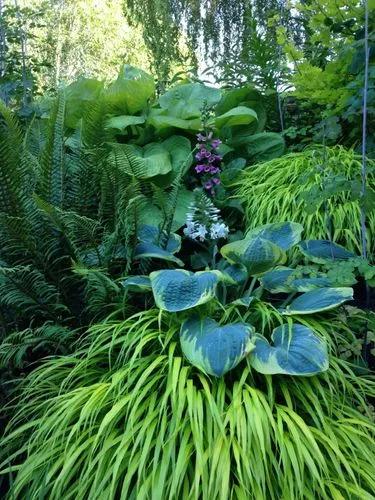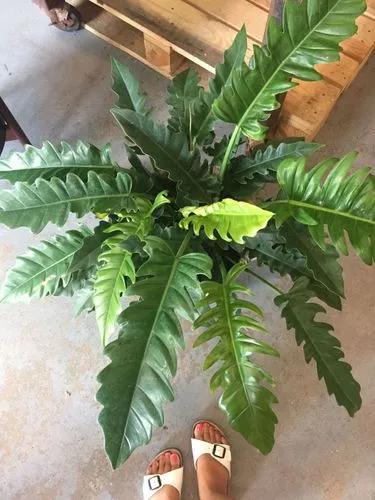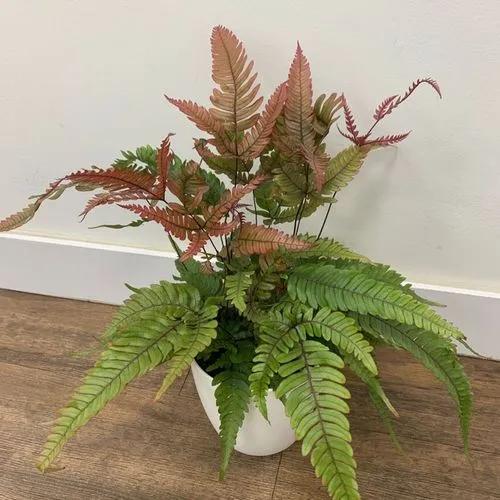Considered to be a delightful, easy-going houseplant, Peperomia Ruby Cascade adds a tropical vibe! Peperomia is a large genus belonging to the Pepper family, also known by its Latin name, Piperaceae. Peperomia are slow growing tropical annuals and perennials that are easy to care for under average room or conservatory conditions. They have striking foliage with red stems. The foliage is fleshy, often with variegation. The flowers are insignificant. These plants need a minimum temperature of 10C. 'Ruby Casade' is a trailing peperomia with ruby-red-backed green leaves.
Peperomia Ruby Cascade Care
Peperomia 'ruby Cascade'



How to Care for the Plant

Water

This means regular watering during the spring and summer when the plant is actively growing. But, allow the soil to dry out frost before watering again. This will prevent watering too frequently which will lead to root rot.

Pruning

Your Peperomia Ruby Cascade is a slow grower as such, it likely won’t need a lot of pruning until the trailing vines get longer. That said, a lot will really depend on the look you’re going for.
Whatever you decide to do avoid pruning too much as doing so can affect future growth.
In addition to pruning for size and appearance, remove any leggy stems as well as those that are discolored or damage.

Fertilizer

If you use compost or worm castings and add them every spring to your potting mix, you won’t need to feed the plant any fertilizer.
This is a good way to go if you don’t want to use any chemicals or prefer not to bother with the potential headache of salt mineral reside accumulating in the soil.
That said, a more traditional way of feeding your Peperomia Ruby Cascade is to apply water soluble fertilizer every 2 to 4 weeks during the spring and summer. Make sure to dilute it to 50% strength.
You don’t need to feed it during the winter as it takes a break from growing.
Alternatively, you can likewise use slow release fertilizer. This will cut down on application as you only need to apply once in spring and another time in summer.

Sunlight

It needs bright, indirect light to thrive. Although, you want to keep it away from direct sunlight and overly intense sun for extended periods of time.
On the other hand, it can tolerate medium and a little lot light. But, do be careful with too little light because it can slow the growth of the plant and reduce the number of leaves.
Similarly, darker places void of natural light also means it takes soil much longer to dry. It this takes too long, it could eventually lead to root rot.

Soil

Peperomia Ruby Cascade needs well-draining potting soil. Because its leaves hold water, it is a good idea to avoid heavy or moisture-retentive soils. This will increase the risk of overwatering even if you don’t actually add too much water since the soil tends to hold on to the moisture.
In addition to good drainage, it needs well-aerated soil. Aeration and water go together because they need to balance one another out.
The reason is that there are only so many miniscule air pockets in the soil. So, too much water will clock up these spaces preventing air to pass through. Unfortunately, your plant’s roots need oxygen just as much as they need water. Without it, they end up rotting.
To achieve the soil you need, you can use a combination of 50% potting soil and 50% perlite, coarse sand or pumice.
Any of the latter three will work as they all work to improve drainage. But, they’re all different so, after a while you can decide for yourself which ones you prefer.

Temperature

Peperomia Ruby Cascade enjoys warm weather. That’s because it is native to tropical and subtropical regions. As such, it cannot tolerate frost or freezing tempeatures.
This makes it ideal to grow in USDA zones 9 to 11, where you can enjoy it indoors or outdoors all year long.
That said, if you live below zone 9, you’ll still be able to grow the plant. I highly recommend going with a container as this lets you keep it as a houseplant or move it indoors or outside as you wish.
This way. once the threat of frost as passed and the weather gets warm, you can take it outside. Just make sure to bring it back indoors before nighttime temperatures get to 50 degrees or lower.

Container

Similarly, avoid overly large containers. The bigger a pot is relative to the size of the plant’s roots, the higher the risk of overwatering since more soil means it will stay wet longer as well.

Additional

Great news! Peperomia Ruby Cascade is not toxic to humans, dogs or cats.
Nevertheless, it is never advisable to allow them to chew or eat any parts as stems can get caught in their esophagus.
There have been a few times my dog has eaten some plants when I leave her outside to play. And, almost every time a few hours later she’ll be throwing up.
So, while the plant is not poisonous, keep an eye on curious kids and pets that may ingest the leaves or stems. The name “peperomia” comes from the Greek words for pepper (peperi) and resembling (homoios). In fact, the plants are closely related. Peperomias belong to the Piperaceae (pepper) family. Ruby Cascade has more of a trailing vine compared to common peperomias, and it produces reddish conical flowers.

Popularity

87 people already have this plant 31 people have added this plant to their wishlists
Discover more plants with the list below
Popular articles






